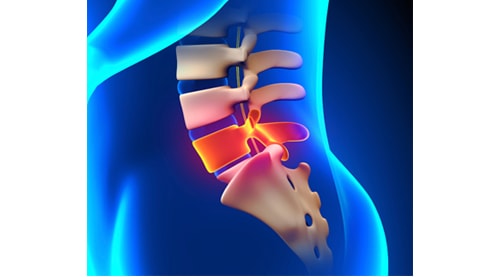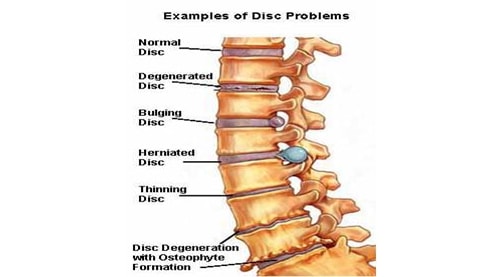Lumbar Fusion
If bone is placed in the disc space, the intention is to form a bony bridge or fusion across the space. Fusion means joining one bone to another. This occurs naturally when a broken bone heals.
Fusion can be done anteriorly – called an anterior inter body lumbar fusion; or posteriorly – called a posterior lumbar inter body fusion.

A Posterior Lumber interbody spine fusion (PLIF) is where small wedges are placed between the vertebral bodies from the back of the spine with bone graft and Screws. An Anterior Lumbar interbody Fusion (ALIF) is where a bone graft is inserted with a wedge and placed between vertebral bodies in the front of the spine with or with out a plate and/or screws. This surgery requires a vascular surgeon to assist.
In young patients, rather than perform a fusion, an artificial disc replacement is used.
The aim of a lumbar spinal fusion surgery is to permanently stop the movement of two or more adjacent vertebrae in the lumbar spine. The vertebrae are joined or “fused” by a bone graft the grows solidly between the vertebrae. implants such as screws, small plates, rods or wedges may be used to hold the spine still while the bone graft becomes solid.

Anterior lumbar fusion or disc arthroplasty requires a cut through the lower abdomen. This is usually a horizontal incision, half way between the stomach and the pubic area; the average incision is 4 – 5cm long.
The abdominal contents are moved to the side, which exposes the front portion of the lumbar disc. A complete discectomy is performed back to the lumbar sacral nerve roots. The disc space is then filled with either a plastic cage, with artificial bone and bone graft. If a disc replacement is used for younger patients the artificial disc is placed into the space where the normal disc has been removed.
The great advantage of anterior lumbar spine surgery is that there is less pain compared to posterior surgery. When operating through the abdomen it is surprising that no muscles are cut; they are separated to expose the front portion of the disc.
In contrast, posterior surgery requires muscles be peeled off the bone, even in minimally invasive endoscopic spine surgery. After anterior surgery, patients remain in hospital for three to four nights. After posterior fusion operations they tend to remain in hospital for six to eight nights.
The disadvantage in anterior lumbar fusion surgery is that access to the nerve roots is more difficult. It is generally a procedure to treat back pain rather than a procedure to decompress nerves.
There are potential complications to the anterior lumbar exposure, please see below.
There are major arteries and veins in front of the lumbar spine. The aorta and the inferior vena cava – the vein which delivers venous blood back to the heart – divide over the two lower vertebrae.
These vessels need to be dissected off the vertebra to expose the disc. For this reason, Dr Amey P.Patankar asks a vascular surgeon to perform the exposure. This minimises the risk of damage or injury to the blood vessels.
For males, another risk when exposing the L5/S1 disc is a condition known as retrograde ejaculation. There are small nerves in front of the L5/S1 disc that facilitate sperm being expelled from the penis.
By dissecting over the disc space, this may interfere with the valve action co-ordinating sperm to pass through the urethra. As a result, sperm may travel into the bladder.
The sensation of ejaculation is largely the same but it can impede conception. Fortunately, retrograde ejaculation happens in less than a few percent of cases and tends to resolve over time (a few months to a year), as these nerves do not control erection.
On the front or side of the spine there is a pair of nerves called the sympathetictrunk. These do not supply any movement or feeling to the legs but supply the skin of the legs, making the skin sweat and the blood vessels constrict.
Blood vessel constriction makes the skin cool and pale. Cutting a sympathetic trunk (called a sympathectomy) can result in a warm and dry leg.
For patients with extensive mid-lumbar dissection there is a small chance of developing a warm and dry leg. This can also result in excessive sweating in the leg. However, it is unusual to see this complication when performing surgery at the L5/S1 or L4/5.